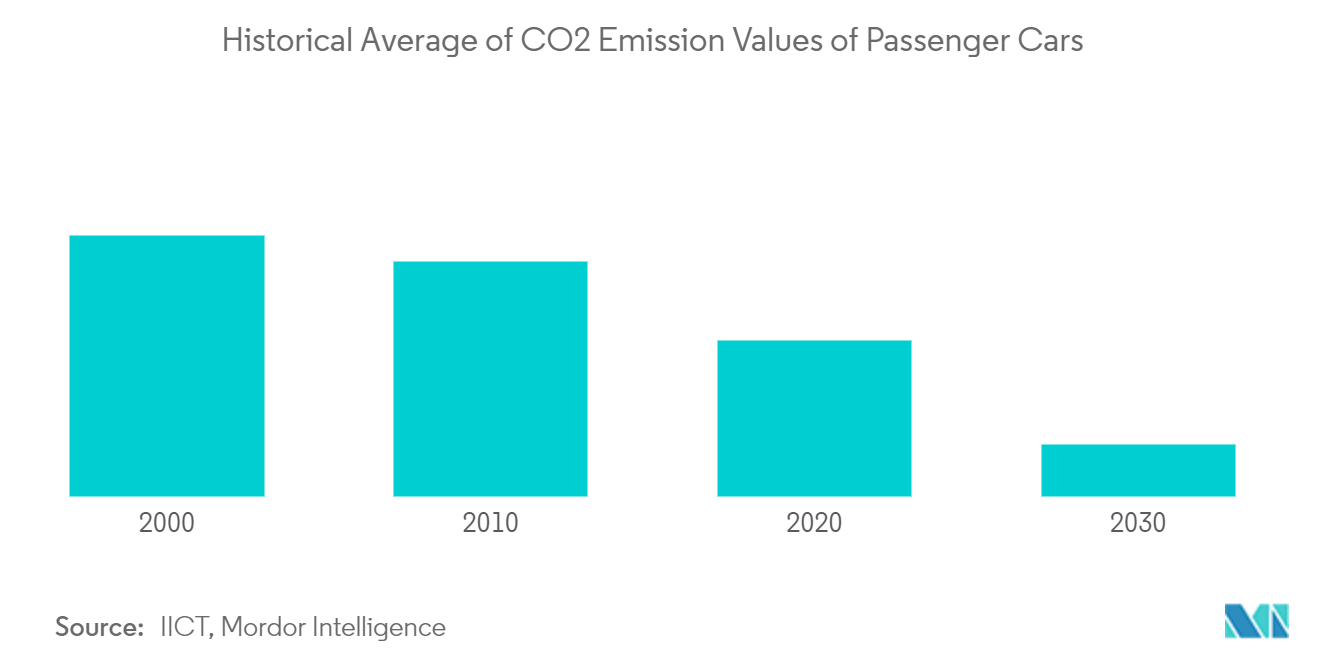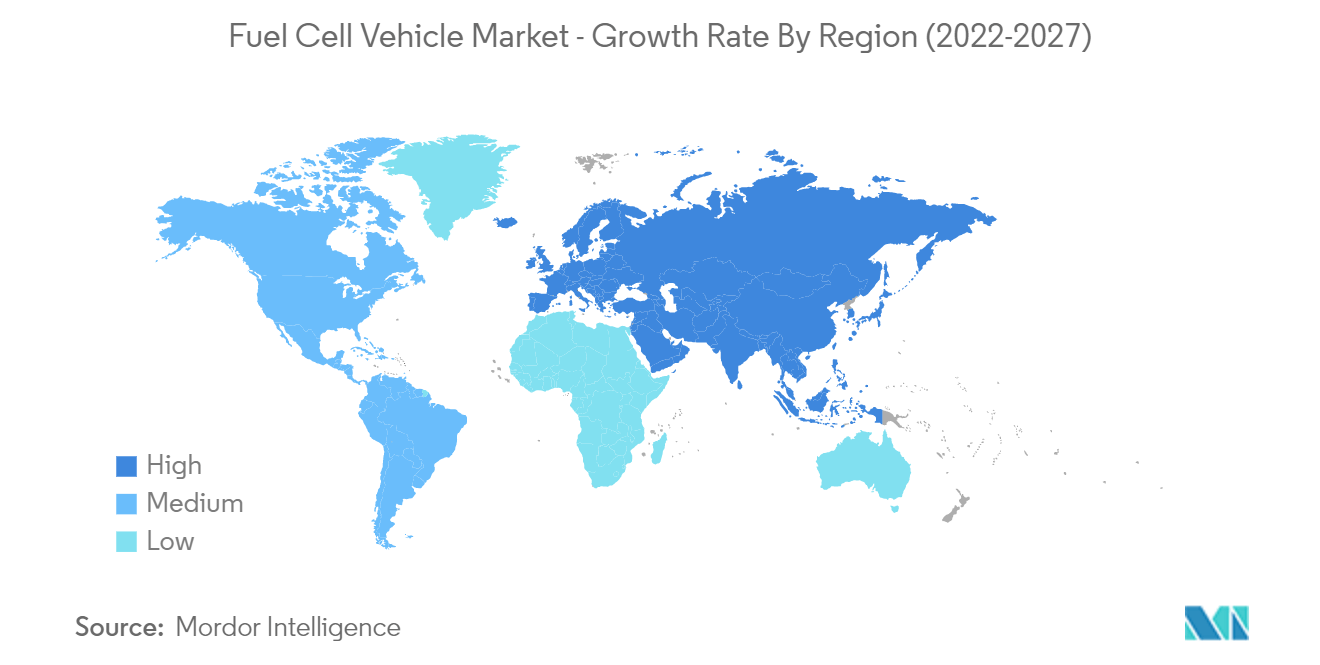Market Trends of Fuel Cell Vehicle Industry
This section covers the major market trends shaping the Fuel Cell Vehicle Market according to our research experts:
Endorsement of Stringent Tail Pipe Emission Norms
Electric vehicles running on Fuel Cells are becoming an integral part of the automotive industry, and it represents a pathway toward achieving energy efficiency, along with reduced emission of pollutants and other greenhouse gases. With the growing environmental concerns, governments and environmental agencies are enacting stringent emission norms and laws, which are expected to increase the manufacturing cost of fuel-efficient IC engines, thereby propelling the demand for electric powertrains in the coming years.
Government initiatives are expected to play a crucial role in promoting fuel cell electric vehicles in many countries. Several countries are implementing plans to ban petrol and diesel cars in the 2030 - 2040 timeframe, to reduce emissions and encourage the sales of fuel cell vehicles. Moreover, several tax relaxations and incentives for EVs are also being put in place to encourage the sales of EVs. These initiatives are expected to drive the demand for electric vehicles, which in turn will support the growth of the Fuel Cell Vehicle market.
For Instance, regulation on CO2 emissions in Europe and the United States is becoming more stringent. Europe has set its emission limits of 95 g/km by 2020 and a further 37.5 percent reduction by 2030, resulting in a limit of 59 g/km. North America has set emission limits of over 99 g/km following the Passenger Vehicle Corporate Average Fuel Economy (CAFE) standards for 2025. In order to reach the pollution standards and avoid penalties, more electrified vehicles will have to be marketed by OEMs in the coming years, which is expected to positively drive the market growth.
An increase in the volume of vehicle exhaust emissions from all sorts of cars that use fossil fuels has polluted the atmosphere. Poor air quality has been related to an increase in a variety of significant respiratory illnesses. Vehicle pollution, which includes NOx, VOCs, PM2.5, PM10, and other pollutants, accounts for around 30% of total air pollution in Europe.
The increase in the government initiatives and regulations to ban or reduce the sale of cars running on IC is expected to aid the fuel cell vehicle market to grow in the forecast period.

Asia-Pacific region is expected to grow significantly
Fuel cell electric vehicles (FCEVs) are zero-emission cars that use a fuel cell to convert hydrogen stored onboard into electricity. Despite the fact that FCEVs have been on the market for over a decade, registrations are still low orders of magnitude fewer than EVs.
This is partly due to the lack of hydrogen refueling stations (HRS) and the fact that, unlike EVs, FCEVs cannot be fueled at home. Furthermore, there are few commercial FCEV models available, and the high cost of gasoline and purchase prices result in a higher total cost of ownership than EVs.
However, the governments of various regions have supported the building of HRSs, either whole or part, to facilitate the deployment of FCEVs, including public buses and municipal vehicles, as well as cars.
Countries like South Korea, China, and Japan, are investing heavily in the hydrogen refueling station infrastructure to facilitate the increased demand for fuel cell electric vehicles in the upcoming years.
South Korea leads in the deployment of the fuel cell electric vehicle development in Asia-Pacific with over 19,000 cars in stock which is almost double when compared to 2020. Additionally, the United States is the second largest stock of fuel cell electric vehicles, with an amount of 12,400 units. Amount 25% more when compared to the stock in 2020.
In Addition, China boasts the world's largest fleet of fuel cell buses and trucks, with over 8,400 vehicles in total. China produces about 90% of the world's fuel cell buses and over 95% of the world's fuel cell trucks.
Owing to the expected growth in the major countries in Asia-Pacific, the fuel cell vehicle market is expected to grow in this region in the forecast period.

